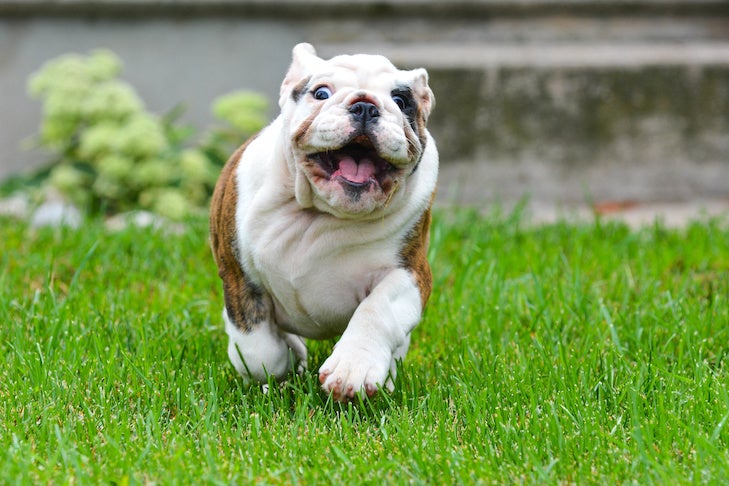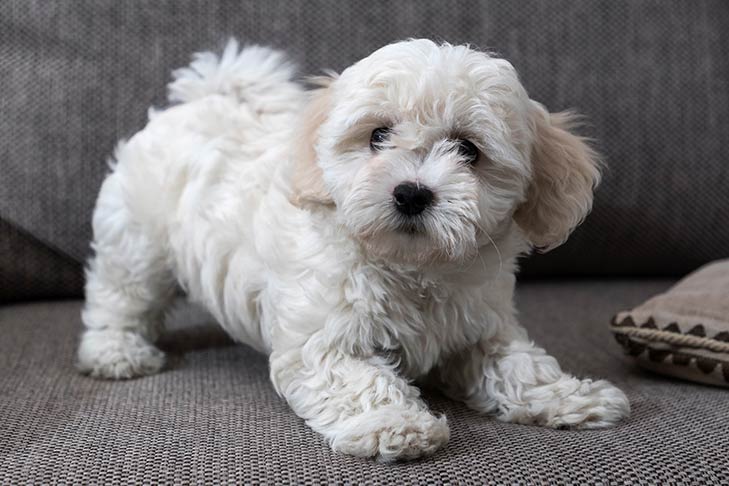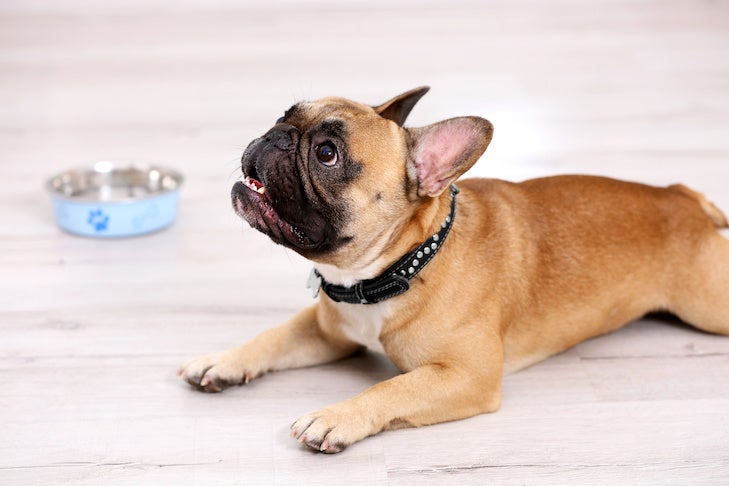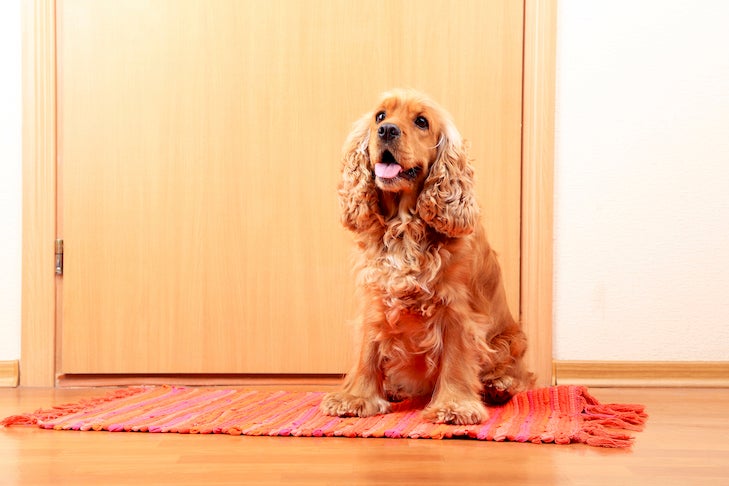
Does your dog jump all over you when you’re trying to put down the food bowl? Do they paw and whine for attention? What about rushing out the front door or pulling on the leash? These are all common dog behaviors because dogs do what works for them in the moment. They’re not particularly patient. In other words, they don’t naturally have emotional self-control.
Learn the Benefits of Emotional Self-Control
Emotional self-control, also known as impulse control, is something most dogs need to be taught. Impatient and demanding puppies don’t magically mature into patient and restrained adults. In fact, if you don’t teach your puppy some level of impulse control, by the time they reach adolescence, it’s likely they will have already developed some bad habits. Many annoying dog behaviors are related to poor self-control.
For example, a dog pulls on the leash because they simply can’t wait for you to keep up. Or they burst out the door of their crate because they’re eager to be free. They don’t know how to wait to get what they want. Their frustration can lead to all kinds of rude behavior, especially in exciting situations.
If you teach your dog self-control, they will be more pleasant to live with. A patient dog is better behaved and less demanding. But it’s also great for your dog. Rather than feeling frustrated by their need for instant gratification, they will feel calmer and more in control of their environment. They will learn how to get what they want instead of struggling against you.

Understand How to Teach Emotional Self-Control
There are a few key elements to teaching your dog self-control. First, show them that rewards come from you rather than just the environment. These rewards can be treats and toys or life rewards like a walk or access to the yard. Show your dog that by giving you what you want, they will get what they want.
Second, show your dog how to earn those rewards. The behavior you choose is up to you. You might want your dog to sit or you might want them to lie down. But something as simple as standing with four paws on the floor can work too. Just be consistent and set the bar where your dog can succeed.
Play Games to Teach Emotional Self-Control
Although teaching emotional self-control sounds like a huge undertaking, it’s best trained through games. Games with rules geared to impulse control will teach your dog that patience brings rewards. Try the following:
Wait for Your Food Dish
Mealtime is a golden opportunity to do a little training. Teach your dog that their polite behavior makes dinner happen. Here are the rules for this game:
1. Hold your dog’s food bowl high enough that your dog can’t reach it. Wait for your dog to settle down and sit or ask for a sit.
2. Once your dog is sitting, begin to lower the food bowl. As soon as your dog’s bum pops off the floor, raise the bowl again and either wait for the sit or request one again.
3. Continue to lower and raise the bowl with your dog’s bum until your dog figures out that their butt is like a light switch – on the ground brings the food closer and in the air makes the food go away.
4. Once your dog remains sitting until the bowl is on the ground, add your release cue and let your dog eat.

Leave It
Leave it is excellent for safety as it can prevent your dog from eating dangerous items. But it also teaches your dog that ignoring a reward is the very behavior that will earn it. The following steps will teach your dog to leave it:
1. Place a treat in your fist and hold your fist in front of your dog.
2. Allow your dog to paw and sniff at your fist as much as they want. As soon as they back away, reward them with a treat from your other hand.
3. When your dog can ignore your fist, start opening your hand so they can see the treat. If they approach, close your fist again. If they back away, re-open your hand. Once your dog ignores your open hand, reward them with a treat from the other hand.
4. Now try placing the treat on the floor and covering it with your hand or foot. Again, reward your dog when they back away.
Wait at the Door
You can teach your dog to wait at the crate door, the car door, or a door in your home, but in the beginning, this is best trained in the house. The following exercise will teach your dog to wait:
1. Wait for your dog to settle down then begin to open the door a crack. As soon as your dog approaches the door, close it again.
2. Repeat this until your dog either backs away or stays still and waits. Now you can slowly increase the amount you open the door, again closing it whenever your dog moves toward it.
3. Once you can open the door completely, add your release cue and allow your dog to go through.

Settle on Cue
A game of tug-of-war, a flirt pole for chasing, or even just wrestling with your dog are all great ways to teach them to settle down. Simply add moments of calm into the middle of the fun. Once your dog understands what you’re expecting, you can add a cue like “Settle Down” or “Relax.” Here are the rules for this game:
1. Start with gentle play. You don’t want your dog too excited before you ask them to settle down. In the middle of the game, stop playing and ask your dog to sit or lie down. Once they do, reward them immediately by starting up the game again.
2. When your dog is sitting or lying down consistently, stop asking for the behavior and wait for them to offer it when you stop playing. Again, reward by restarting the game.
3. When your dog is offering the sit or down, you can start to slowly increase the intensity of the game before stopping for a settle break.
Choose the games that suit your dog’s personality and you’ll be amazed how fast they learn to control their impulses. But on top of these games, don’t forget to reward calm behavior whenever you see it. Anytime your dog is showing restraint, be sure to give them a treat or kind word so they know it’s worth their while to control their emotions.

